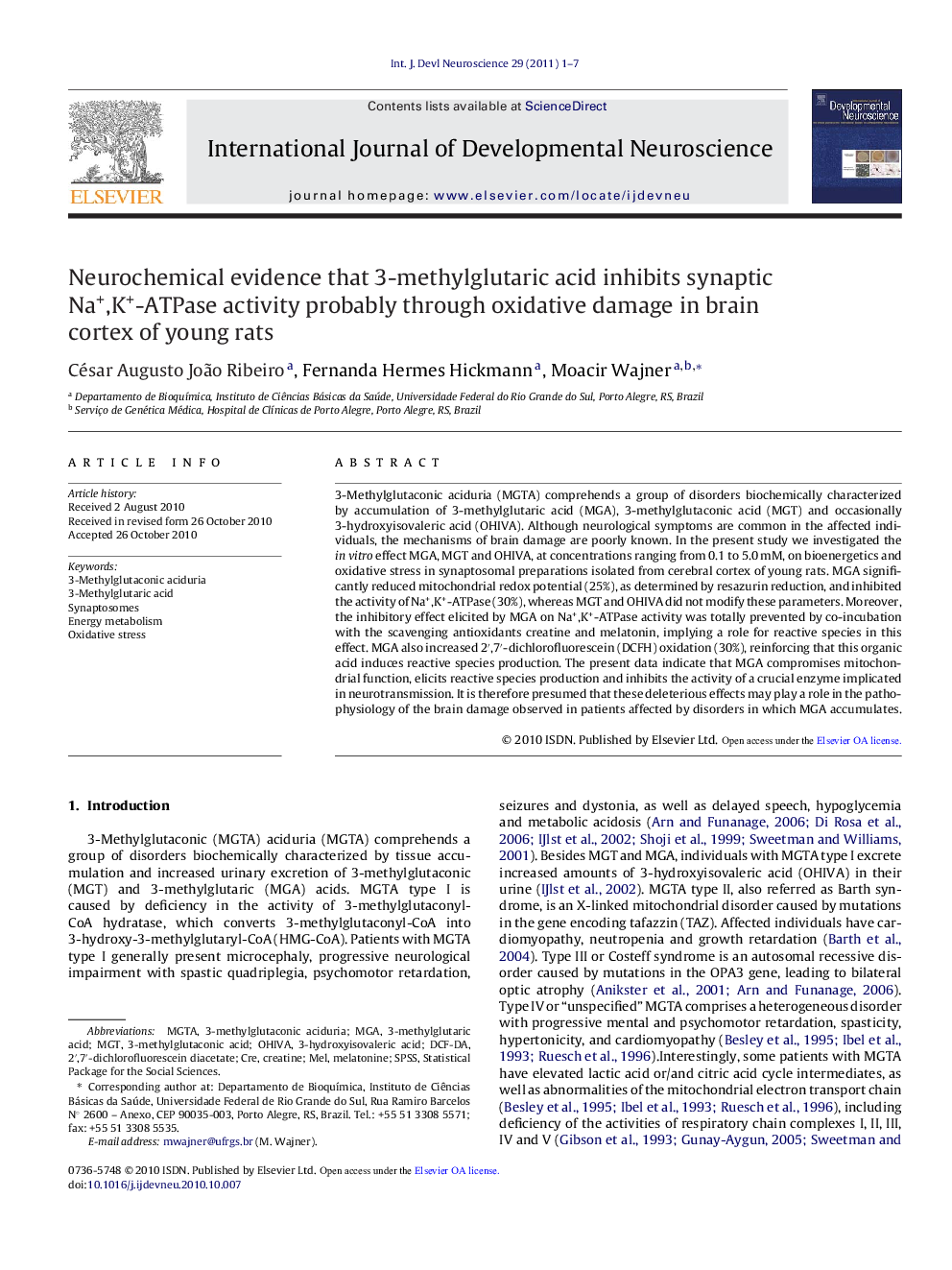| Article ID | Journal | Published Year | Pages | File Type |
|---|---|---|---|---|
| 5893983 | International Journal of Developmental Neuroscience | 2011 | 7 Pages |
3-Methylglutaconic aciduria (MGTA) comprehends a group of disorders biochemically characterized by accumulation of 3-methylglutaric acid (MGA), 3-methylglutaconic acid (MGT) and occasionally 3-hydroxyisovaleric acid (OHIVA). Although neurological symptoms are common in the affected individuals, the mechanisms of brain damage are poorly known. In the present study we investigated the in vitro effect MGA, MGT and OHIVA, at concentrations ranging from 0.1 to 5.0Â mM, on bioenergetics and oxidative stress in synaptosomal preparations isolated from cerebral cortex of young rats. MGA significantly reduced mitochondrial redox potential (25%), as determined by resazurin reduction, and inhibited the activity of Na+,K+-ATPase (30%), whereas MGT and OHIVA did not modify these parameters. Moreover, the inhibitory effect elicited by MGA on Na+,K+-ATPase activity was totally prevented by co-incubation with the scavenging antioxidants creatine and melatonin, implying a role for reactive species in this effect. MGA also increased 2â²,7â²-dichlorofluorescein (DCFH) oxidation (30%), reinforcing that this organic acid induces reactive species production. The present data indicate that MGA compromises mitochondrial function, elicits reactive species production and inhibits the activity of a crucial enzyme implicated in neurotransmission. It is therefore presumed that these deleterious effects may play a role in the pathophysiology of the brain damage observed in patients affected by disorders in which MGA accumulates.
Research highlightsⶠ3-Methylglutaric acid (MGA) accumulates in a group of diseases known as 3-methylglutaconic aciduria. ⶠMGA decreases mitochondrial function and inhibits Na+,K+-ATPase activity in synaptosomes. ⶠMGA induces reactive oxygen species formation. ⶠReactive oxygen species formation is probably involved in MGA-induced Na+,K+-ATPase inhibition since antioxidants prevented this inhibitory effect.
